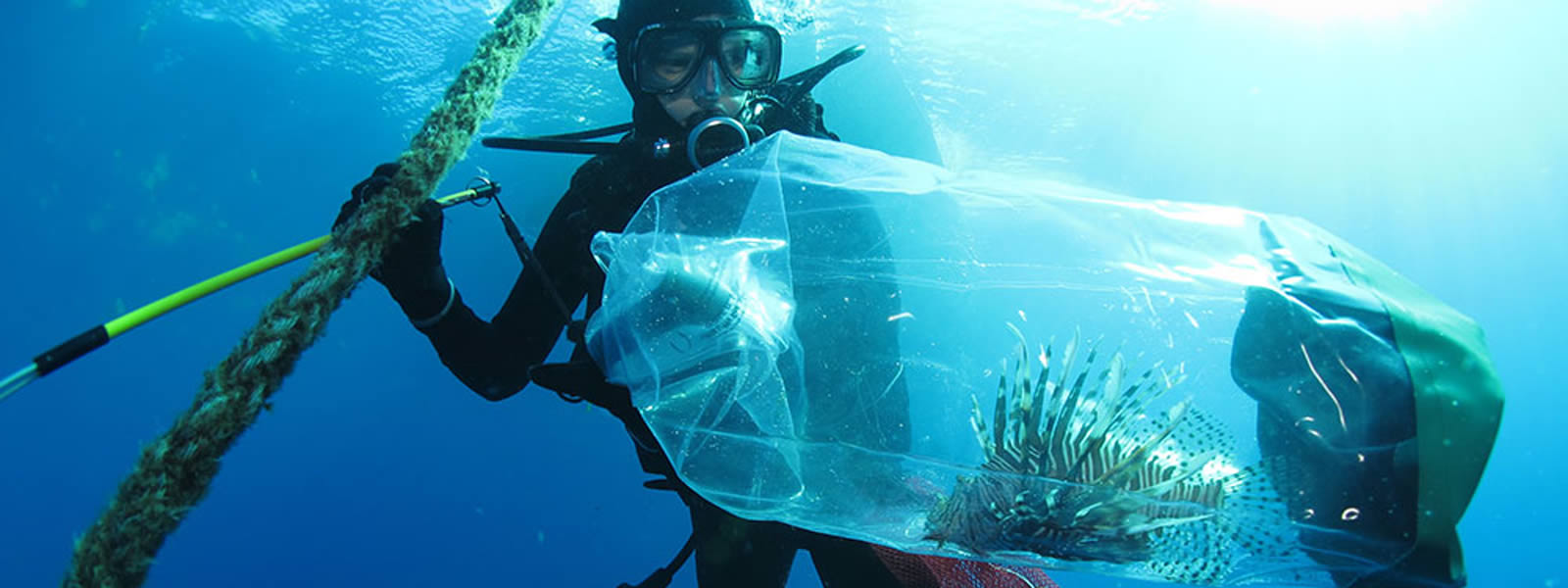
What’s happening with lionfish?
Let’s apply what we’ve learned about population growth and density-dependent factors to lionfish. When lionfish first arrived in the Bahamas, their population grew nearly exponentially for a short period of time. But more recently, their population growth rate has decreased, and the population size has seemed to stabilize.
Why did the lionfish population stop growing? Did a negative density-dependent factor limit the population’s size, or was it something else? Scientists are actively investigating these questions.
Learn more about lionfish
Scientific investigations of lionfish population growth
As of 2020, the size of the lionfish population in the Bahamas seems to be decreasing, and scientists are investigating why. It’s possible that the population’s carrying capacity is lower than what was previously estimated. Possible reasons for the lower carrying capacity may be intraspecific competition, infrequent cannibalism, or changes in abiotic conditions.
Scientists are studying lionfish populations not only in the Bahamas but also in many other places where lionfish are an invasive species — including South Florida, North Carolina, the northern Gulf of Mexico, Cuba, the Cayman Islands, Belize, Panama, and Venezuela. Their research may help us better understand lionfish population dynamics and the density-dependent factors that limit lionfish population growth. Studies in the northern Gulf of Mexico, for example, have shown that the health and size of lionfish at a certain age decrease as density increases, likely due to a negative density-dependent factor.
How can I help?
People who work professionally as scientists aren’t the only ones who help us learn about lionfish and other invasive species. Anyone can help collect data as a citizen scientist. Because the ocean is large and fish move, lionfish populations are difficult to track. Citizen scientists play an important role by going on dives to monitor lionfish. Organizations such as the Reef Environmental Education Foundation (REEF) help connect citizen scientists and research scientists so that they can work together to collect, store, and analyze vital data.
If you live in or travel to a place where lionfish are an invasive species, you can also join efforts to remove the lionfish there. These efforts may include lionfish derbies, which are single-day competitions to collect and remove as many lionfish as possible. You can also eat lionfish. Lionfish are tasty and creating a market for their meat can remove more lionfish from the wild.
Even if you aren’t in a place with invasive lionfish, you can still help with the broader problem of invasive species. Learn about the invasive species near you and contact local authorities to find out how you can help!